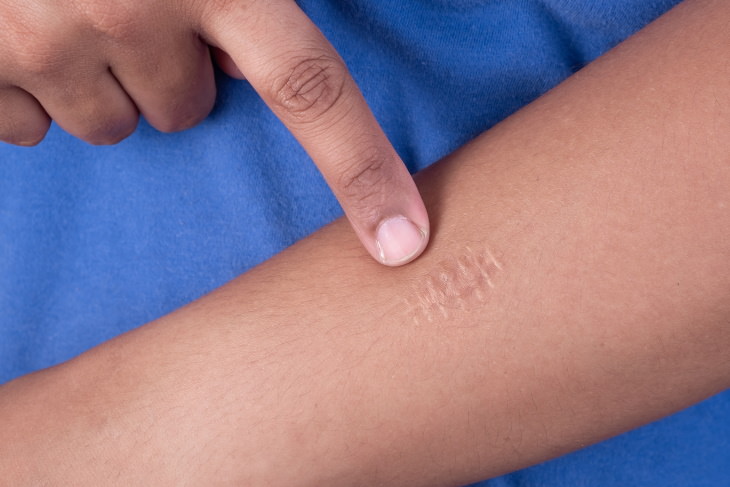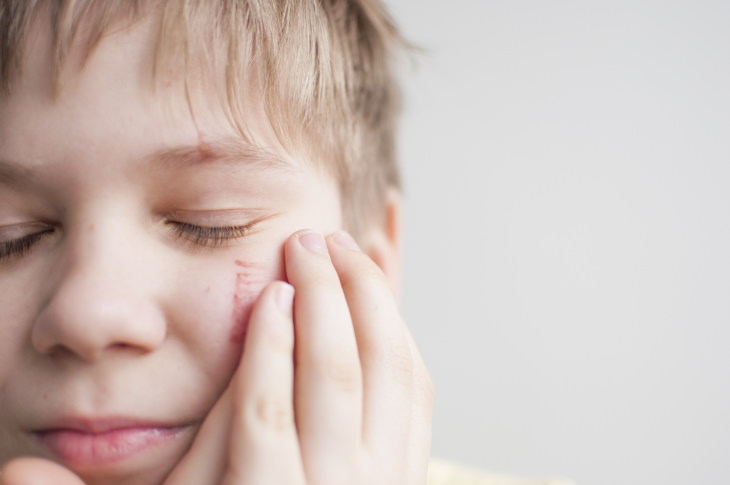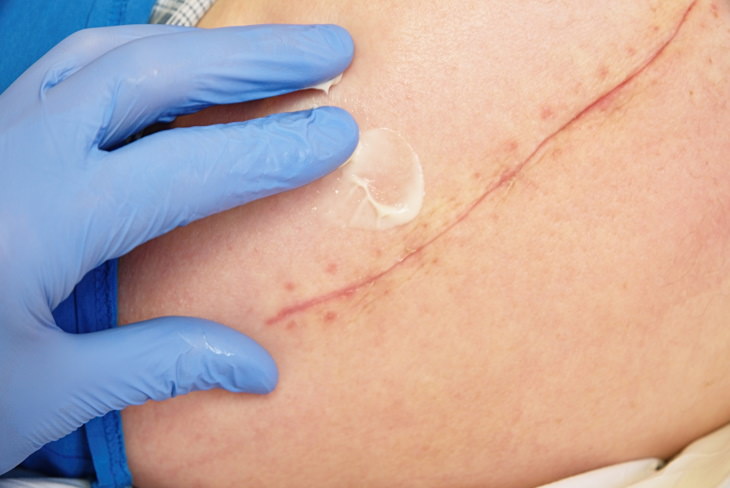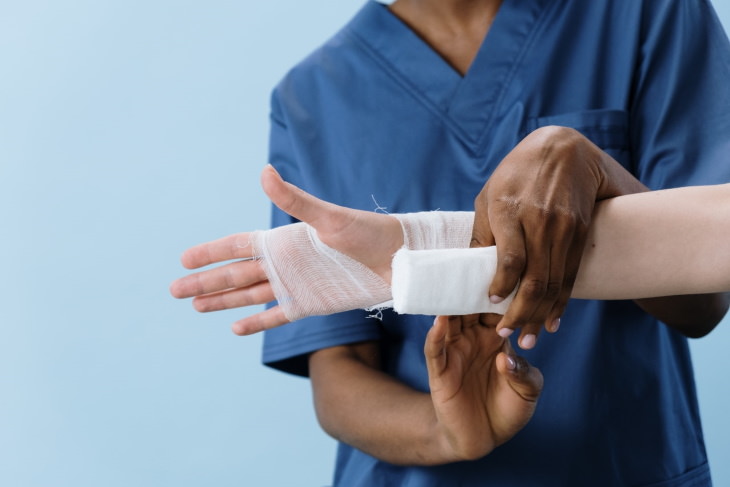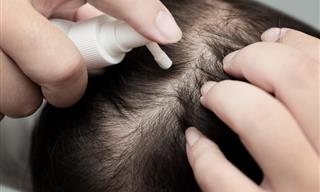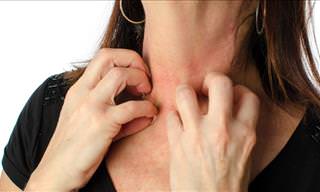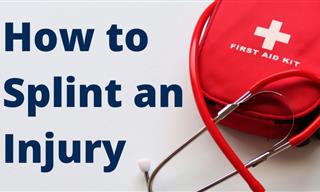So what is a scar anyway?
We need to go on a brief biology detour before we can define a scar. Here it goes. The human skin consists of three main layers: the epidermis, the dermis, and the hypodermis. Scars only appear when the dermis - the biggest, middle layer of the skin - is injured. This injury interrupts the structure of the collagen and elastin fibers in the dermis, resulting in a scar. This happens in four stages:
- Hemostasis - bleeding stops and a scab forms.
- Inflammation - white blood cells come to the wound to kill germs, causing redness, pain, and swelling.
- Proliferation - the skin replaces the damaged cells with new ones. The wound and scab get smaller and smaller.
- Maturation - the injury is healed, possibly leaving behind a scar.
Scars are also subdivided into various types, some of which may require special treatments. This topic is described in depth here - The Types of Scars and Possible Treatments.
How to prevent scarring in a fresh wound
You’ve injured yourself. Now how do you proceed to reduce the risk of scarring? The three main goals to keep in mind are to minimize inflammation, reduce further injury, and protect the wound from infection. To do so, follow these steps:
1. Begin by cleaning the site of the injury. Wash it with antibacterial soap and water to clean away any dirt and bacteria.
2. Keep the wound moist by applying petroleum jelly onto the wound. Contrary to popular belief, cuts do not to be kept dry, especially if your goal is to prevent scarring. “Petroleum jelly prevents the wound from drying out and forming a scab; wounds with scabs take longer to heal. This will also help prevent a scar from getting too large, deep, or itchy,” recommends the American Academy of Dermatology (AAD).
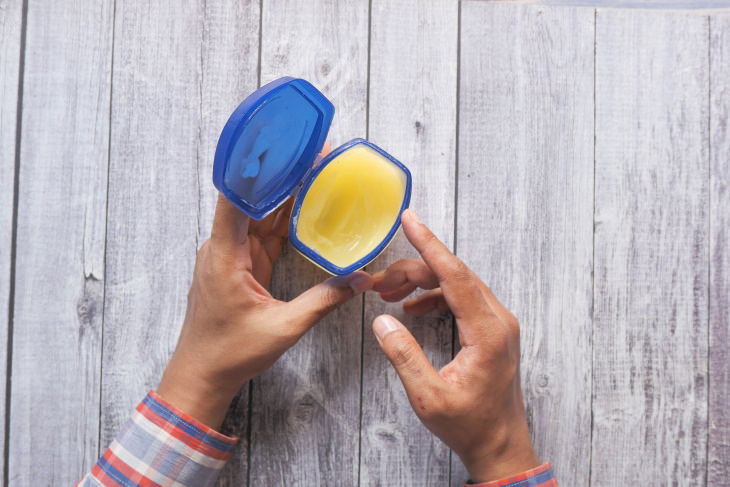
3. Cover the wound with an adhesive bandage or a piece of gauze and paper tape if your skin is sensitive to adhesives. In case the injured area is rather large, or you’re dealing with a burn, you may want to apply a hydrogel sheet instead of a bandage. A so-called road rash - when you scrape the skin against asphalt - should also be treated like a burn.
4. While your skin is healing, move the affected area as little as you can. “Every time the scar moves, it’s going to alter the formation for a wider or thicker scar,” said Dr. Shilpi Khetarpal, a dermatologist, to Cleveland Clinic. So give yourself a good break and let the skin heal.
5. Avoid scratching or picking scabs on healing wounds. Scabs function as natural bandages, and picking them will only prolong the injury from healing. So… just don’t. Similarly, avoid the temptation to scratch a healing injury, as this could increase inflammation or introduce germs to the wound. If you tend to scratch or pick scars as you sleep, buy a pair of cotton gloves and wear them to sleep.
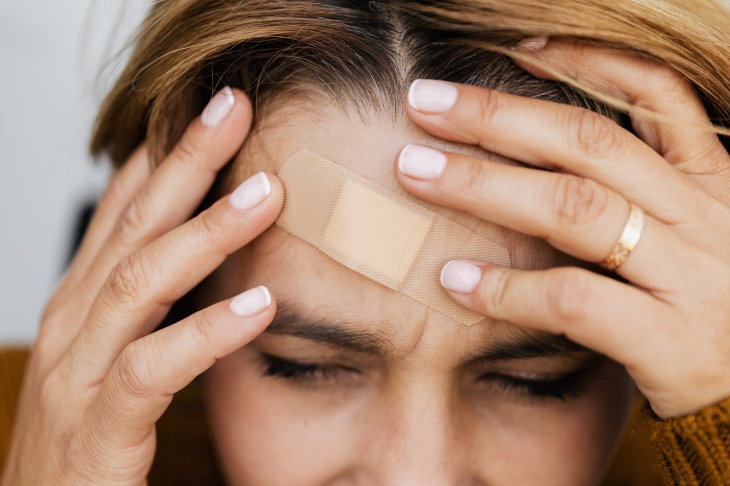
6. Replace the bandage with a new one every day, unless advised otherwise by your doctor or the instructions on the bandage packaging.
Speaking of doctors, don’t hesitate to call one if you have a more serious wound. If the injury looks rather large or deep, getting it stitched up by a medical professional will help the wound heal better. Get to the doctor’s office as soon as possible - a fresh injury has a better chance of clearing up with minimal scarring. If you wait a little too long, the wound could become contaminated, and getting stitches may no longer be an option.
Not sure if you should see a doctor in the first place?
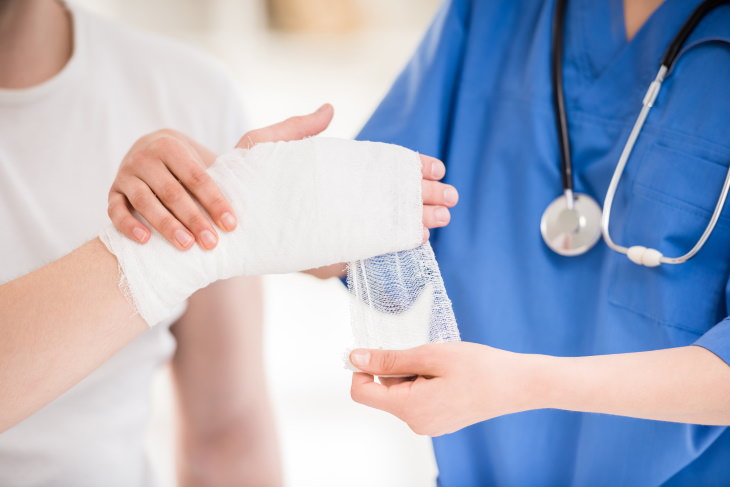
Minor cuts and scrapes can be safely treated at home without the risk of serious scarring. However, an injury that’s very deep, infected, or painful requires urgent medical assistance. The wound location matters too: any injury to the vital organs and the face should always be treated at the hospital. Likewise, injuries to the hands and feet located near the joints, tendons, nerves, or bigger blood vessels require medical care.
Seek immediate medical attention if the wound fits within any of the following categories:
- The wound keeps bleeding
- It’s a deep puncture wound
- The injury is a bite or a burn
- You’re experiencing a lot of pain or a fever.
Are scar prevention ointments effective?
The short answer is no - bacitracin, vitamin E, and other scar prevention creams don’t really clear up scars. The AAD warns that no product available over-the-counter claiming to prevent scars has good scientific evidence of being capable of significantly improving scarring.
Dermatologists also advise against using hydrogen peroxide too often, as it may irritate the skin and slow down the healing process.
Instead, experts recommend letting your body do the job. Healing can take weeks or even months depending on the severity of the injury and even its location. Areas with thinner skin and better blood circulation, such as your face, tend to heal faster than, let’s say, the legs or feet. So collect all the patience you have a let your skin heal itself.
Related Article: 6 Remedies to Remove Scars the Natural Way
How to minimize scarring of a healed wound
Healing is a very long process; it doesn’t stop when the scab falls off, revealing a pinkish scar underneath. The first phase of healing is estimated to take around 3 months, followed by another phase of the same duration. During this time, a scar may change color from red to pale or dark, and become either thicker or thinner. A scar is considered fully formed only 1 year after the day of the injury.
Before you hit the one-year mark, you still have a good chance of minimizing the appearance of the scar.
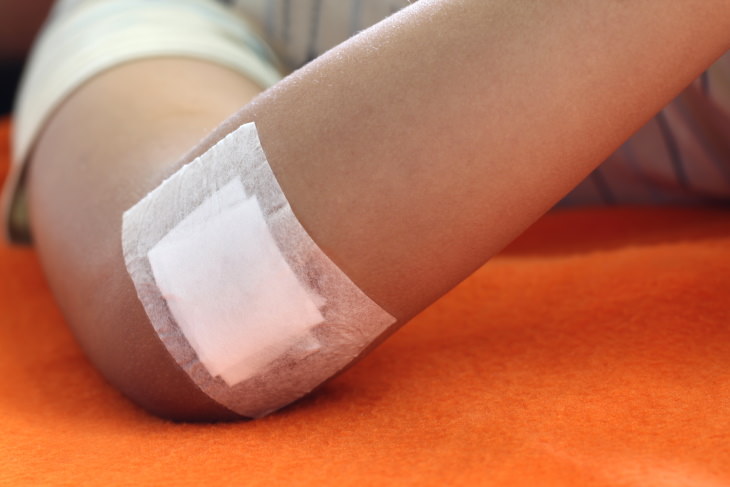
This can be done by simply applying a dab of moisturizer to the scar and gently massaging it. “In the first year, it’s important and has been shown to be helpful to do a gentle massage on your scar for a few minutes a day. It helps break up any scar tissue for ones that are getting thick,” said Dr. Khetarpal.
Applying silicone scar sheets on the skin can also be helpful for preventing scars, but this trick only works during the first few weeks after the injury.
Last but not least, be very prudent with your sunscreen during this time, reapplying it every few hours if you’re in the sun. That’s because sun exposure can cause discoloration, rendering the scar more prominent (either darker or lighter than your skin).
When prevention fails
The simple tips we listed above go a long way in maximizing your success in minimizing a scar at home. Unfortunately, some scars are simply impossible to avoid or shrink at home. If you have a bothersome scar like that, dermatologists recommend seeking professional help as soon as possible.
In the past, medical interventions were the last resort for patients, but that guidance has changed with the emergence of novel treatments like micro-needling and laser treatments. With the help of such in-office procedures and medications, it's possible to reduce the appearance of scars by as much as 60%. Talk to your dermatologist to see what treatments are best for you.
H/T: AAD, Cleveland Clinic, Hopkins Medicine, Everyday Health
 Go to BabaMail
Go to BabaMail


